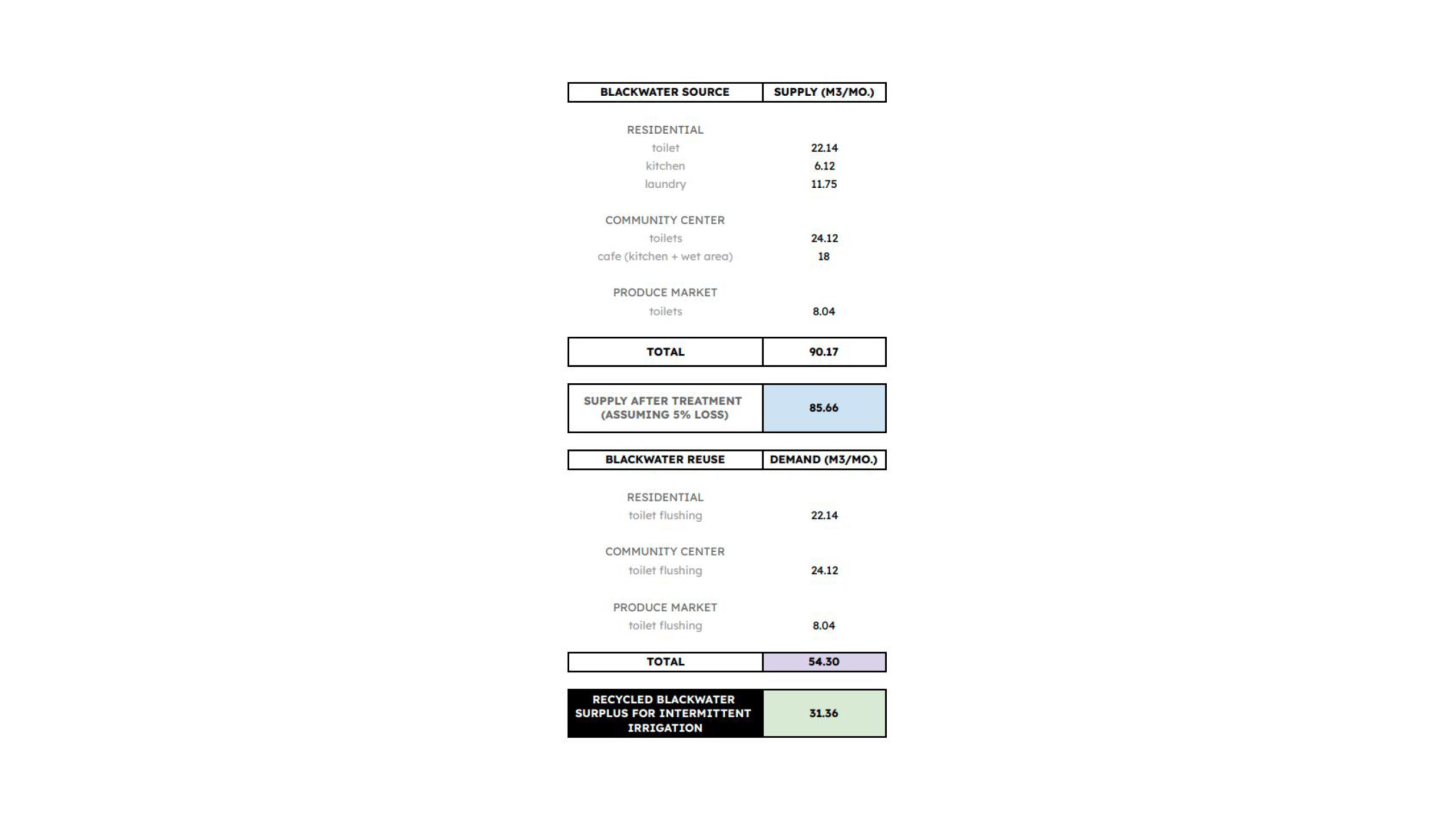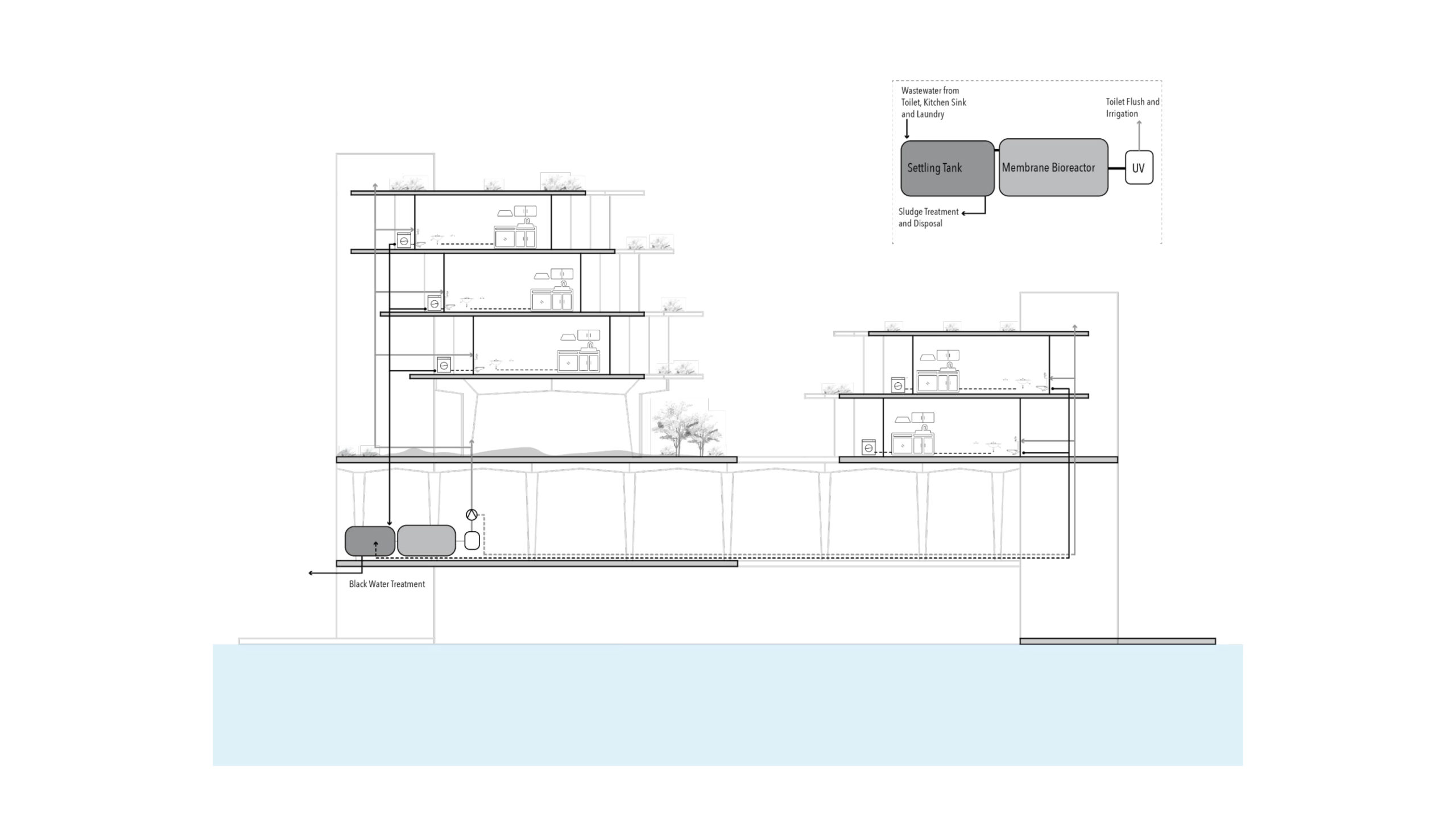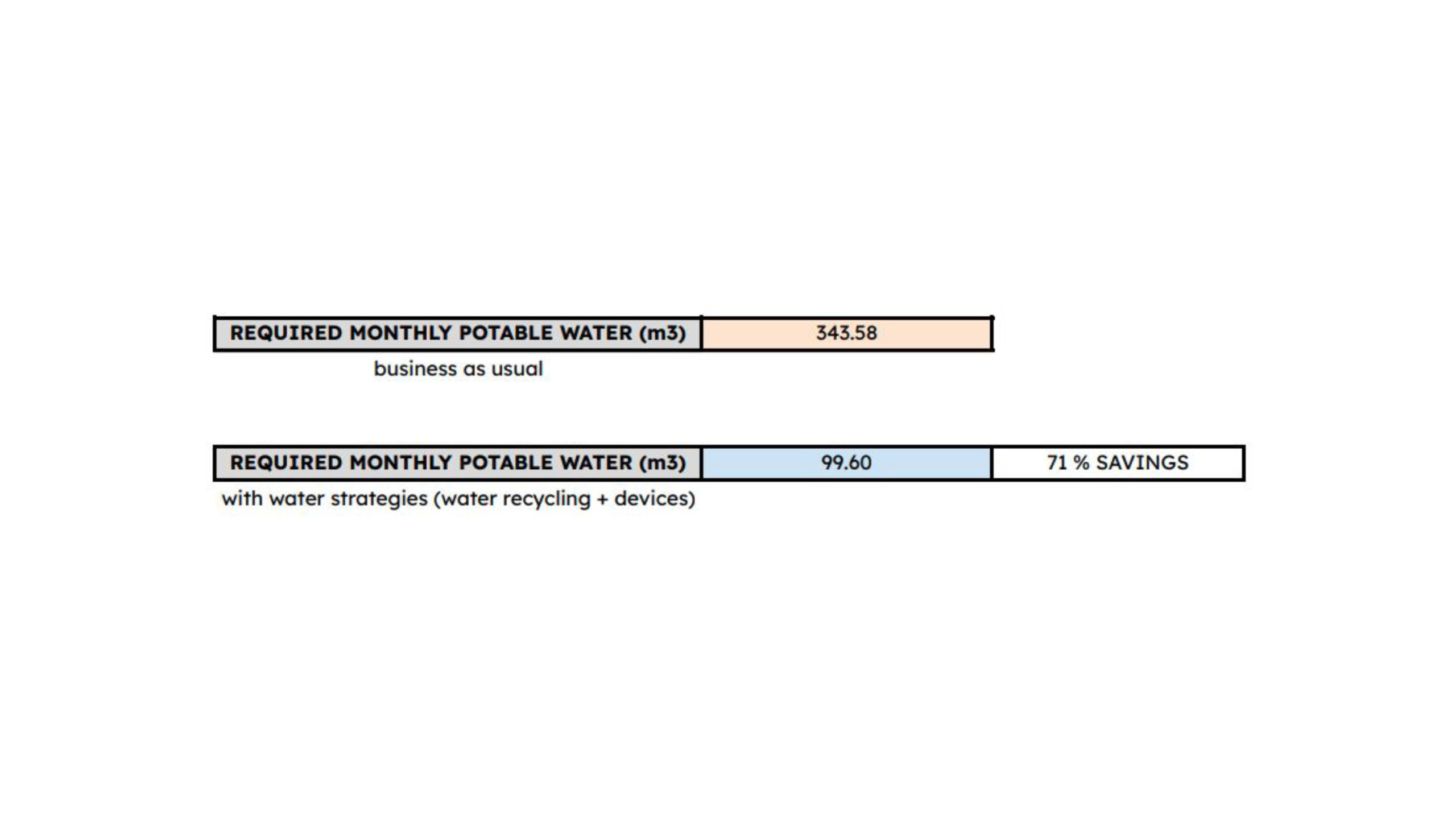Water Demand of the Building
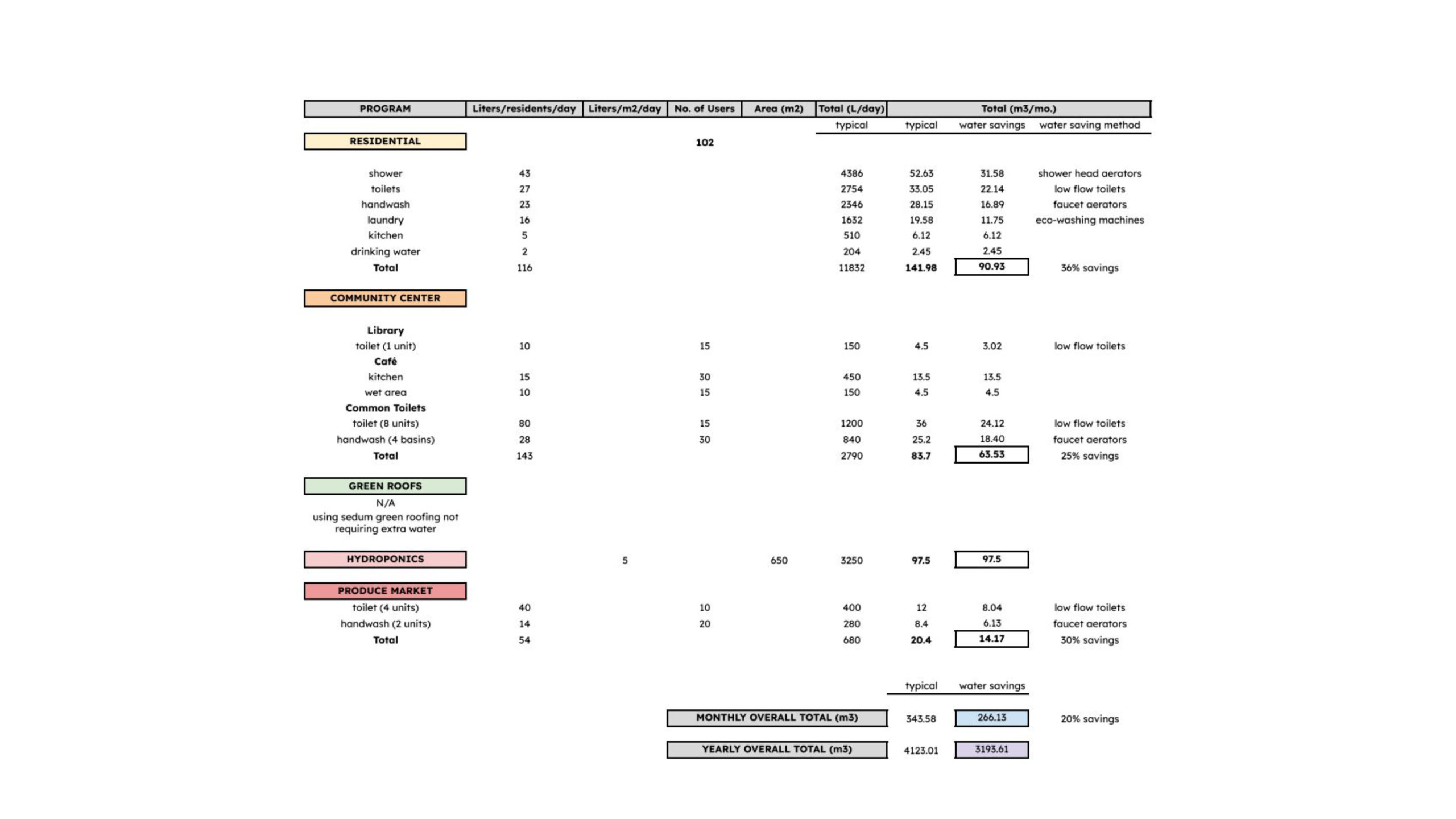
Water Saving Strategies
The building depends on rainwater harvesting, greywater recycling, black water treatment and recycling to reduce its water demand. Water saving strategies such as shower head aerators, faucet aerators, low flow toilets and eco-washing machines help to reduce the monthly water consumption by 20%. The landscape includes native plant species such as Sedum plants that require minimum water to thrive and do not affect the humidity levels of the building’s microclimate as well.
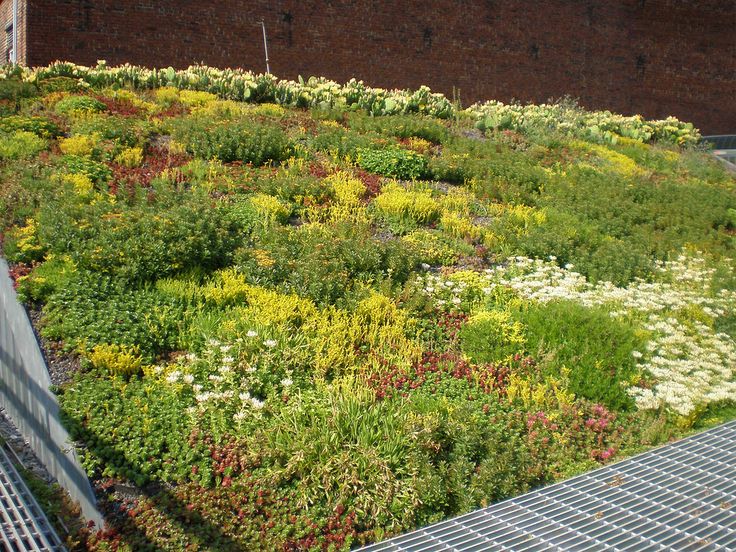
Rainwater Harvesting
Throughout the year, Venice accumulates 966 mm of precipitation over 78.3 rainfall days. The month with the most rainfall is September and with the least rainfall is November. Rainwater is captured through the terraces on the building and it is fed into the hydroponics system. Although, the water demand exceeds the quantity of rainwater harvested during the winter months. To avoid depending on other sources of water to meet the water demand, excess rainwater (through June to October) is stored in storage tanks.
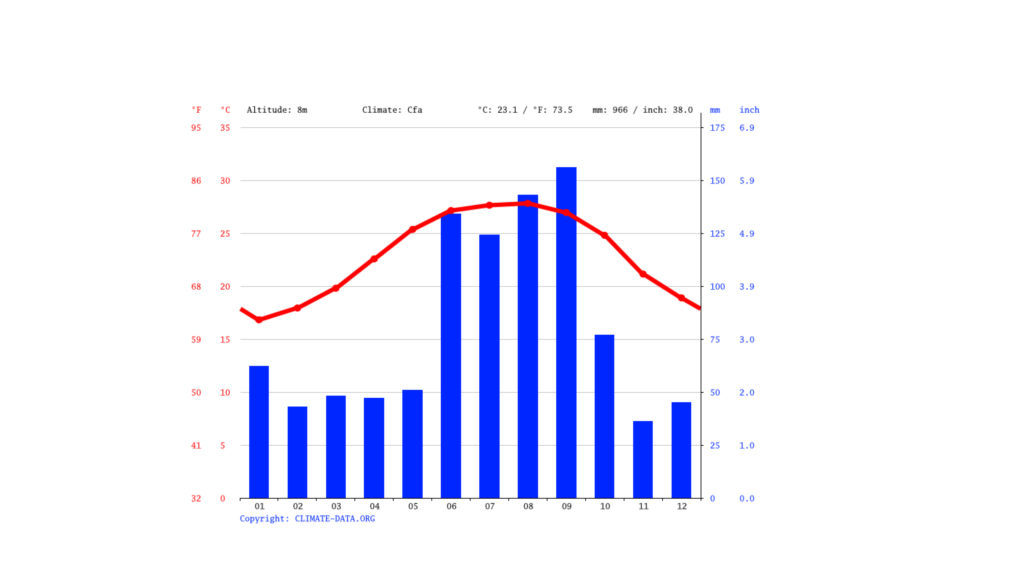
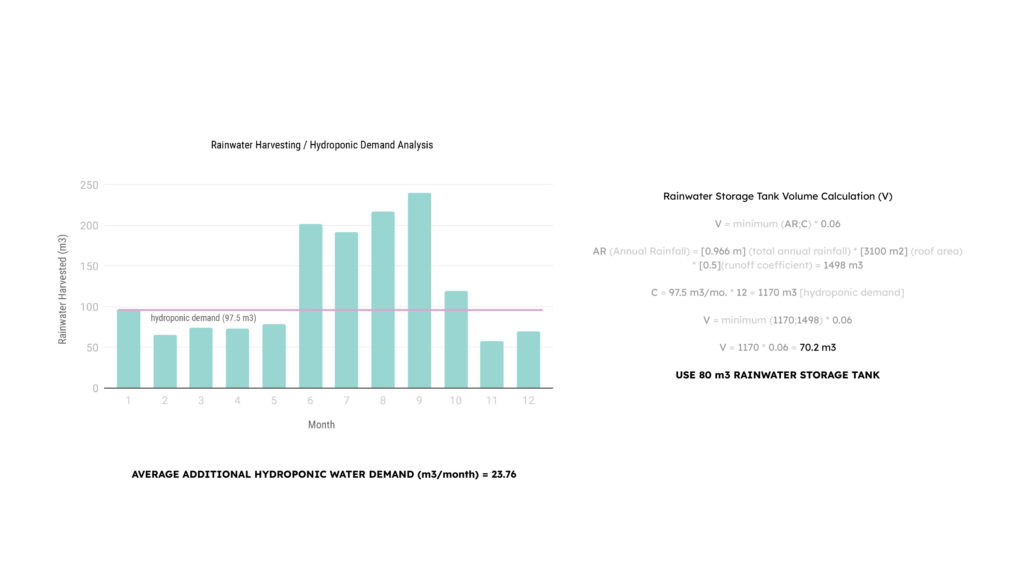
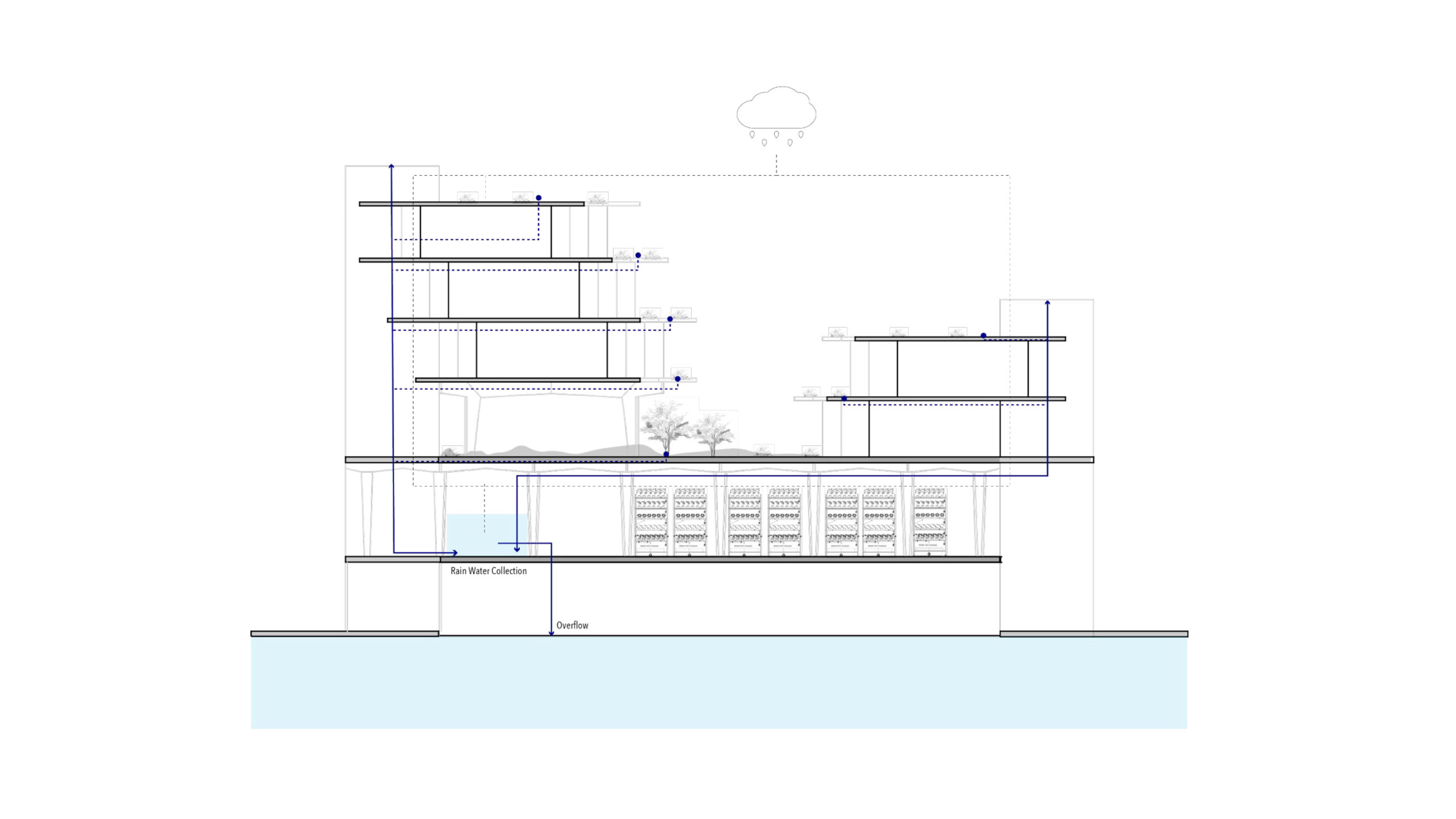
Waste Water Treatment- Grey Water Recycling
The grey water from sinks and shower heads is treated and recycled to be used for laundry and hydroponics. The surplus is used for irrigation.
The grey water goes through a primary, secondary and tertiary treatment system. The tertiary system utilizes plants to filter water before it is used for laundry and hydroponics. Taking advantage of the verticality of the core, the tertiary system is located along the cores. Greywater after the secondary treatment trickles down through the plant filter consisting of successive layers of reed bed, tea bags, cotton jali, compost and pebbles. The filtered water flows back to a storage tank.
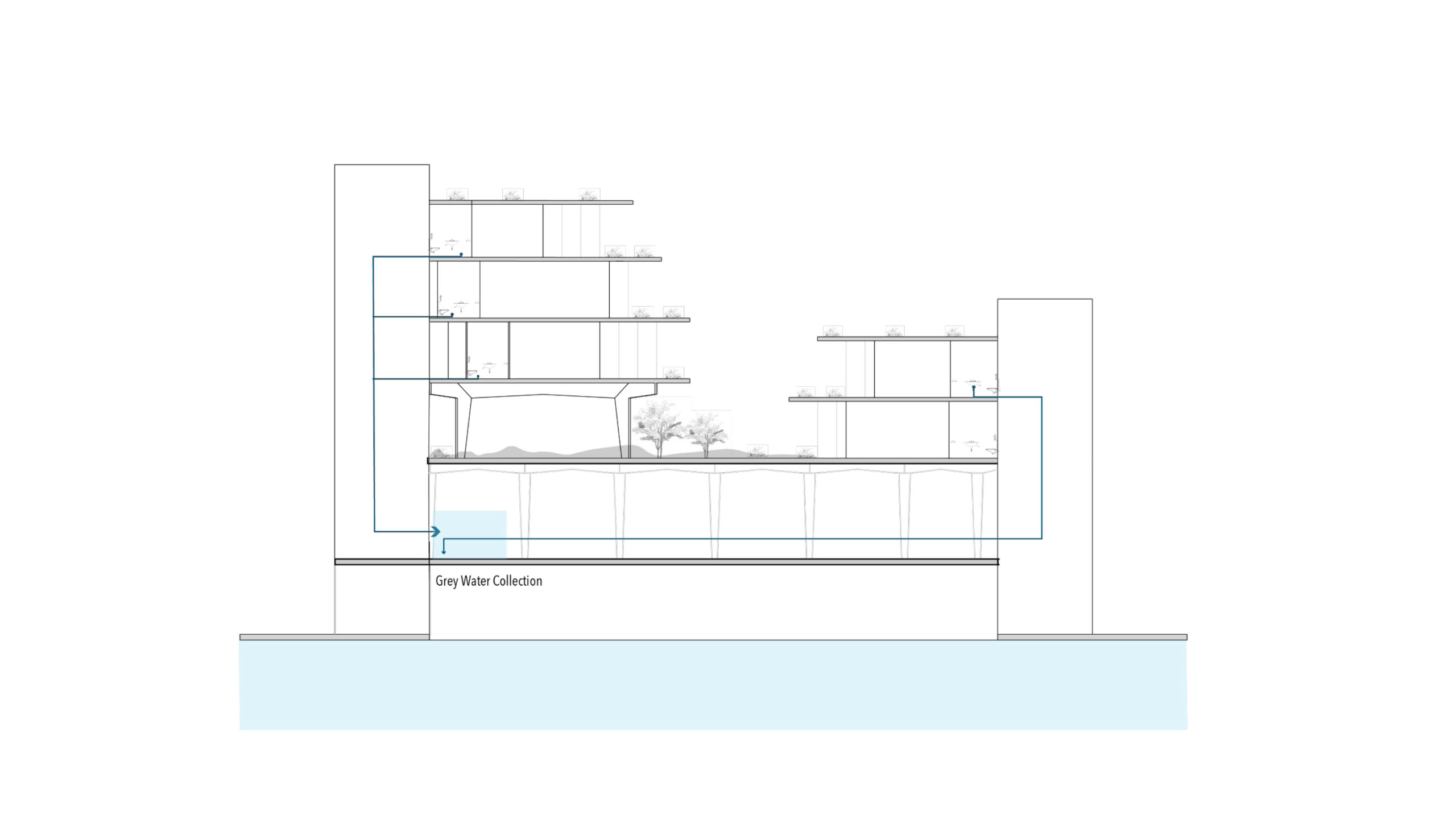
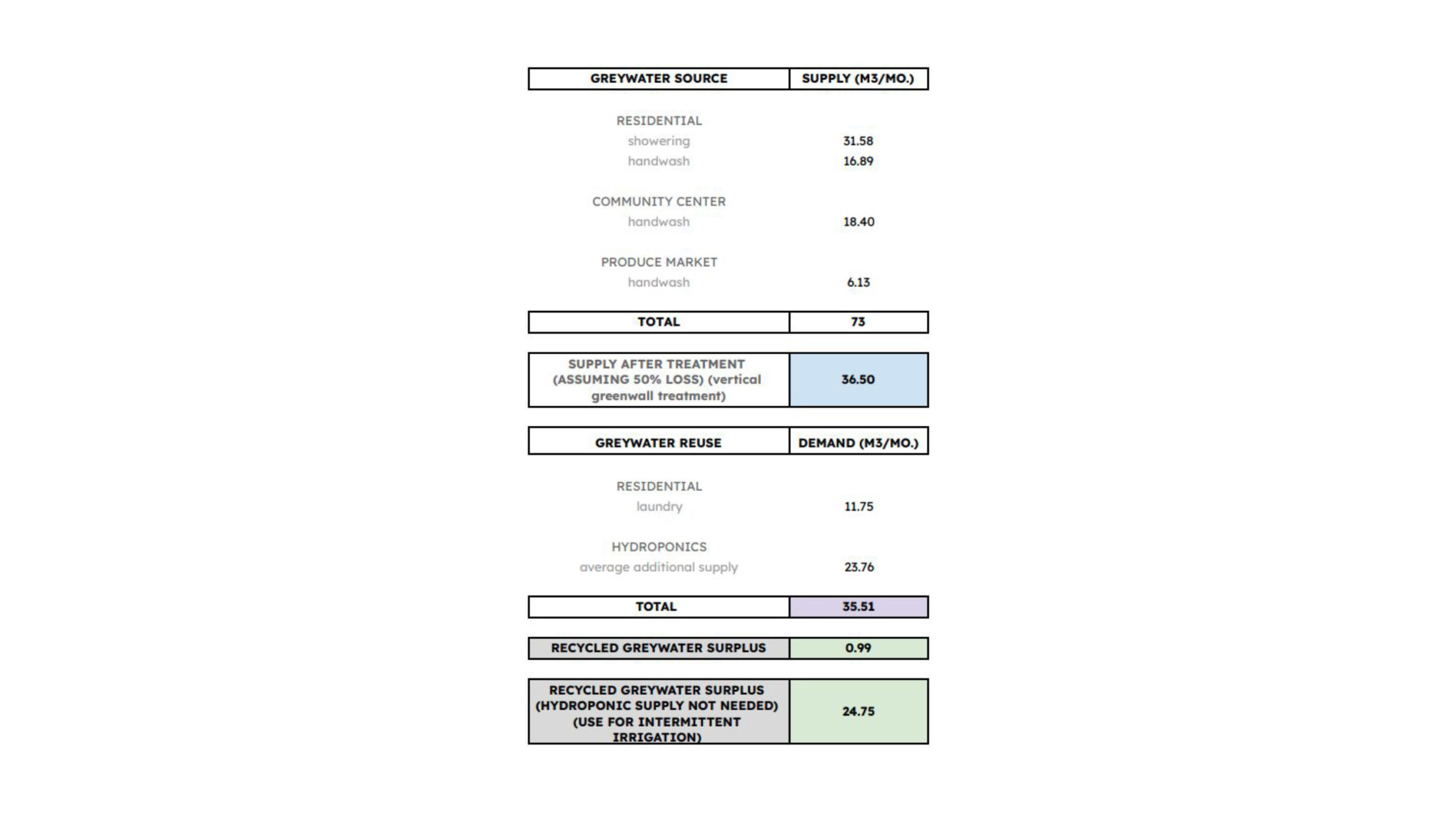
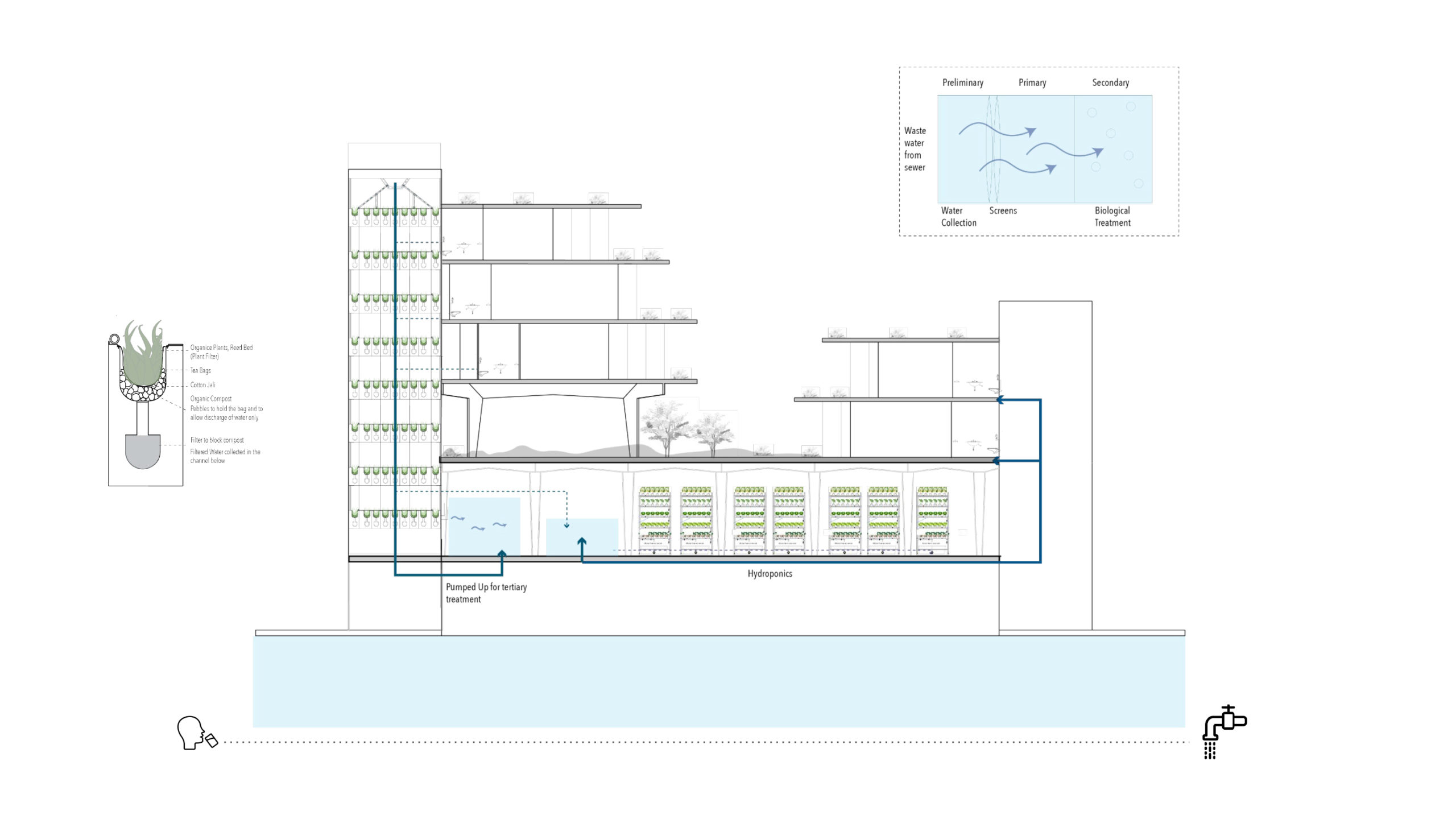
Waste Water Treatment- Black Water Recycling
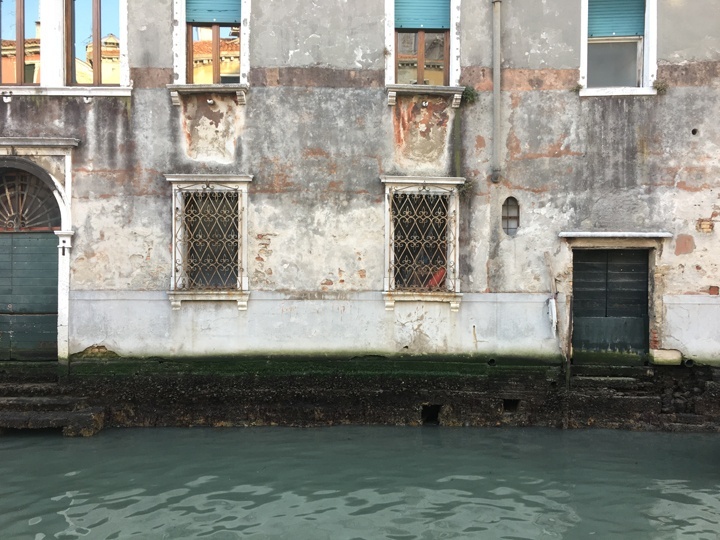
The city of Venice relied on a historical sewer system known as ‘gatoli‘. Gatolis were brick tunnels that ran under the streets of the city and connected toilets to the canals. This system was renowned because twice-a-day tides replaced the wastewater from the lagoon with clean water from the Adriatic Sea. However, this system is no longer adequate for managing the sewage demands of Modern Venice. The canals have since been notoriously famous for foul smell. The system has been upgraded with 7,000 septic tanks and few STPs. Although, they aren’t widespread and come with other challenges. It becomes mandatory to treat black water. Buildings are encouraged to treat blackwater before releasing it into the canals.
The blackwater from the kitchen sinks, toilets and laundry of the building is treated and recycled to be used for toilet flushing. The surplus is utilized for irrigation purposes. Use of organic soaps and detergents can further reduce the load on the treatment systems.
